Why Do I Need So Much Documentation for PCI DSS Compliance?
I can hear you roll your eyes but I’m glad you asked that question.
Nobody likes documentation. Well, maybe tech writers and writers in general love documentation but I’ve yet to meet a system administrator that loves documentation. Especially when it comes to the documentation needed for PCI DSS Compliance.
As a former senior IT security director once told me, “PCI compliance is an exercise in killing trees.”
I get it. Most people would rather have a root canal than document critical PCI Compliance processes.
Early in my PCI ISA career, I spent hundreds of hours, maybe a few thousand, getting the documentation needed for PCI DSS compliance to a state that made the annual Report on Compliance assessment nearly effortless.
Before we get into the types of documentation that are need for PCI DSS Compliance, let’s start with the types of documentation needed for any Cybersecurity or Information Security program worth its salt.
When you start with your organization’s Cyber/Information Security documentation, any number of compliance and other regulatory programs can leverage this set of documentation to prove compliance with a few hundred documentation requirements.
Policies, Standards, Processes...Oh My!
Information Security Policy
- The Information Security Policy informs the organization’s cybersecurity framework. It outlines the fundamental principles, goals, and guidelines for protecting the organization’s information assets. This policy sets the tone for the organization’s commitment to information security and serves as a reference point for all other documents in the hierarchy.
- Example: A company’s Information Security Policy might state the organization’s commitment to protecting sensitive data, ensuring compliance with legal and regulatory requirements, and defining roles and responsibilities for maintaining security.forms
Standards
Standards provide specific, measurable requirements that must be met to comply with the Information Security Policy. They translate the high-level goals of the policy into actionable and enforceable criteria.
- Example: A Password Standard might dictate the minimum length, complexity, and expiration period for user passwords, such as requiring a mix of uppercase and lowercase letters, numbers, and special characters, with a minimum length of 12 characters.
Guidelines
Guidelines offer recommendations and best practices for meeting the standards but are generally more flexible than standards themselves. They provide advice on how to implement security measures effectively.
- Example: A User Access Control Guideline may suggest best practices for assigning and managing user roles and permissions, such as conducting regular access reviews and using the principle of least privilege.
Procedures
Procedures providendetailed, step-by-step instructions on how to perform specific tasks or processes in accordance with the standards and guidelines. They are designed to ensure consistency and accuracy in the execution of security practices.
- Example: An Incident Response Procedure would outline the exact steps to take in the event of a security breach, including how to identify, contain, eradicate, and recover from the incident, as well as how to document and report it.
Work Instructions
Work Instructions provide specific instructions for performing individual tasks. Think of these as step-by-step directions.Work instructions are often used for technical or specialized tasks that require precise execution.
- Example: A work instruction for configuring a firewall might include a detailed list of commands and settings to be applied, along with screenshots or diagrams to guide the technician through the process.
Records and Logs
Records and logs document the execution of procedures and compliance with standards. They serve as evidence that security measures have been implemented and provide a basis for audits and reviews.
- Example: Access logs that record who accessed specific systems and when, or audit trails that track changes to sensitive configurations, are examples of important records in cybersecurity.
When done correctly, a well documented and current cybersecurity framework is the cornerstone of an effective and efficient PCI DSS compliance program...and any other regulatory or legal compliance program.
Peggy Nolan, CEO Payment Card Assessments
What Types of Documentation Are Needed For PCI DSS Compliance?
Now remember, if your cybersecurity or information security documentation are in order, one outcome is meeting most, if not all, of your PCI DSS documentation requirements.
Cybersecurity documentation serves as evidence that your organization adheres to the 300+ security requirementsdesigned to protect cardholder data. The types of documentation required for PCI DSS compliance typically include policies, standards, procedures (processes), logs, and reports.
Policies
Formal written statements that outline the organization’s security objectives and the rules governing the security of cardholder data.
- Information Security Policy: Documents the organization’s commitment to securing cardholder data and the specific measures taken to achieve this.
Standards
Standards provide specific, measurable requirements that must be met to comply with the Information Security Policy.
- Access Control Standard: Defines how access to cardholder data is managed, including who can access it and under what circumstances. You may have separate standards for Logical Access and Physical Access.
Procedures (Processes)
Detailed, step-by-step instructions on how to implement and comply with the policies.
- User Access Management Procedure: Describes the process for granting, reviewing, and revoking access to systems that handle cardholder data
- Data Encryption Procedure: Outlines the methods and tools used to encrypt cardholder data both in transit and at rest.
Logs
Logs are records of system activities that help in monitoring and detecting security incidents.
- Audit Logs: Capture detailed information on access to cardholder data and other critical system activities.
- Firewall Logs: Track traffic that passes through the network firewall, noting any attempts to access the network.
Reports
Reports summarize data that provide insights into compliance status and security posture.
- Vulnerability Scan Reports: Summarize the results of periodic scans for security vulnerabilities in the system.
- Incident Response Reports: Document any security incidents, including the nature of the incident, response actions taken, and any lessons learned.
Nobody Likes Documentation
Trust me. I get it. You have to sit down and put meaningful and actionable words to paper.
Which then need to be reviewed, approved, communicated, updated as needed, etc.
Without a robust Cyber/Information Security Documentation Framework, not only will your PCI Compliance program become a never ending fire drill but you could face a worst case scenario when (not if) your breached.
While this may be seen as an exercise in killing trees, when your organization maintains comprehensive and up-to-date cyber security documentation, you can easily demonstrate your adherence to PCI DSS requirements and ensure the security of your customer’s cardholder data.
Do You Need Help With Your PCI DSS Compliance Documentation?
At Payment Card Assessments, we have guidebooks, checklists, templates, and video training courses in our PCI Training Resource Center.
We can also provide gap assessments on your current documentation to ensure you’ve got the right policies, standards, and processes in place for your next PCI DSS SAQ or Report on Compliance.

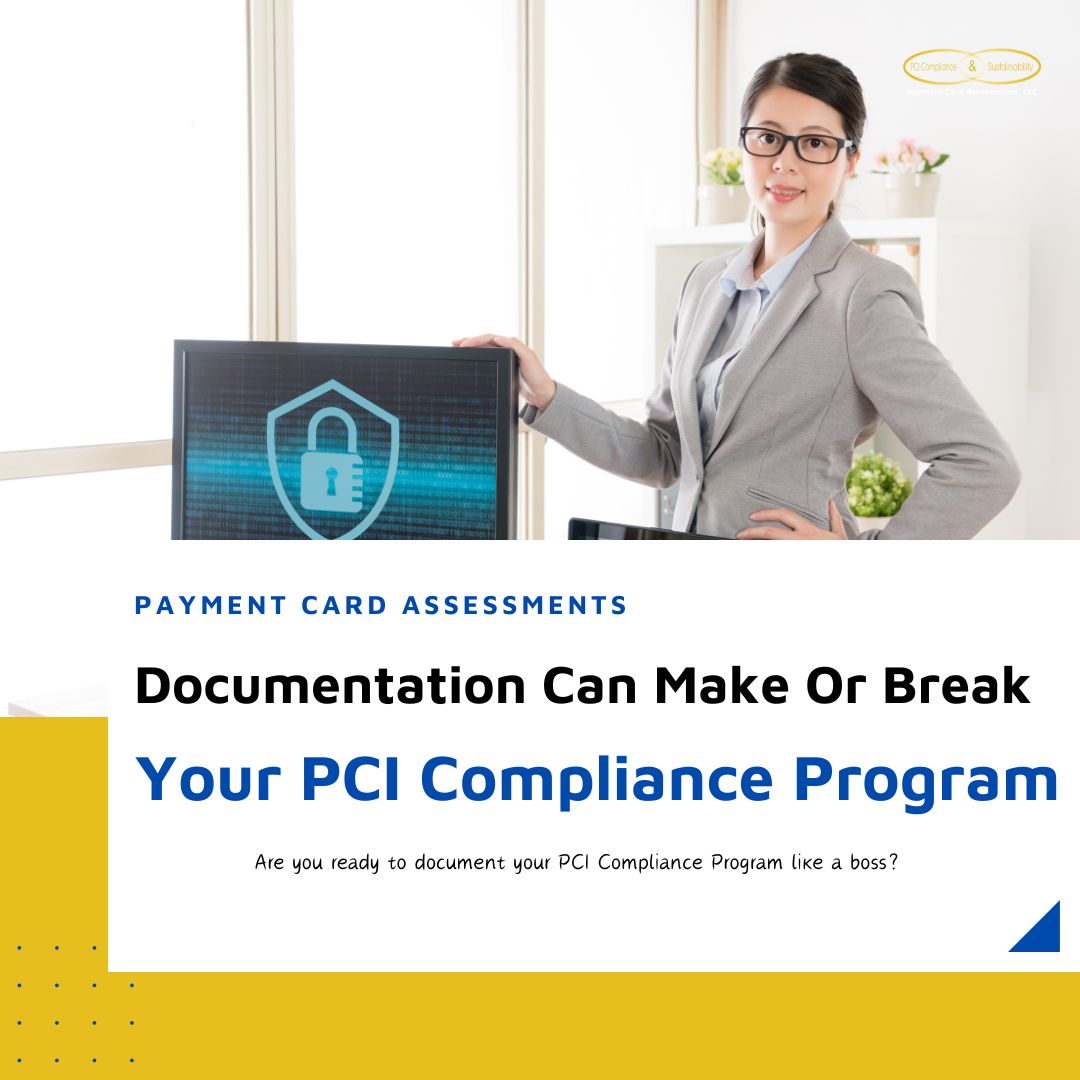
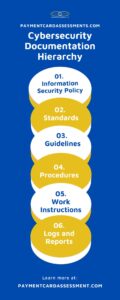
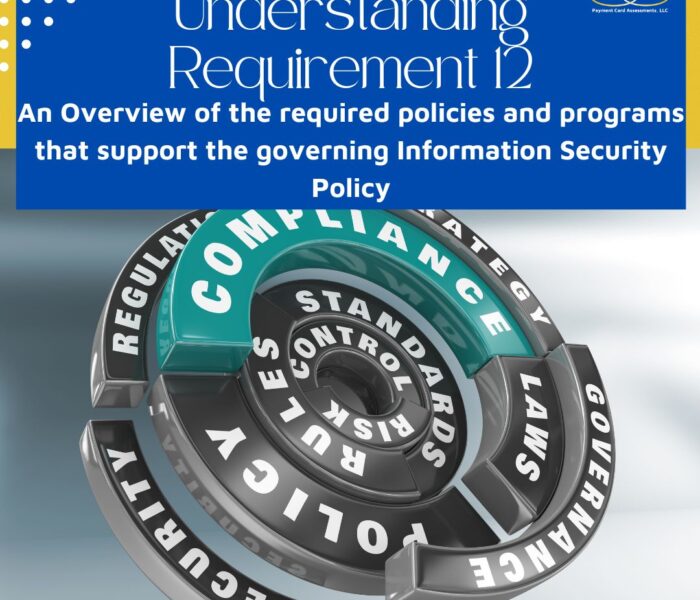
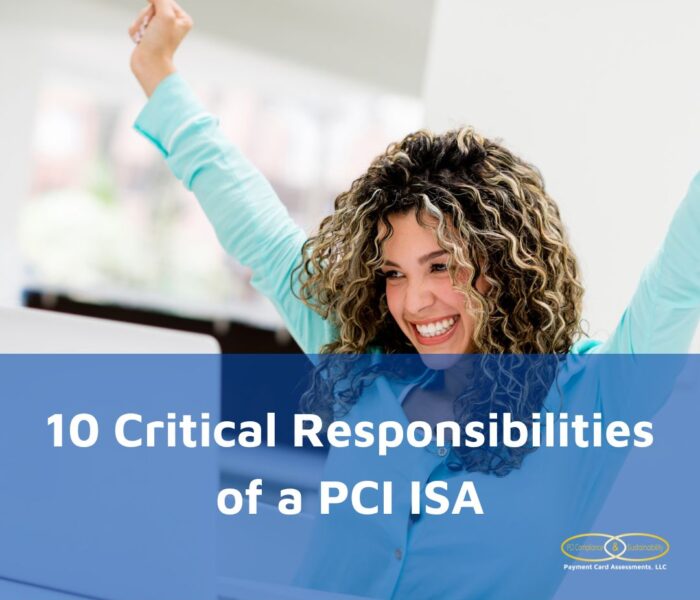
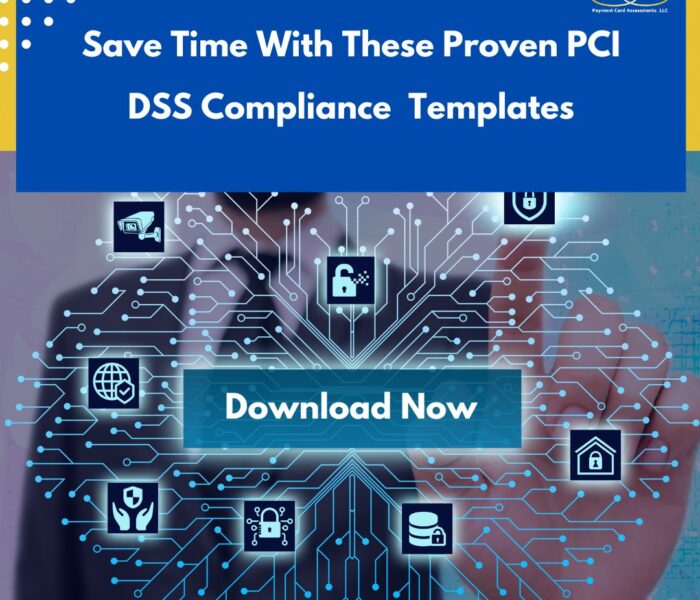
A great article on PCI DSS Compliance in general. It was very informative.
Thank you!
A great article on PCI DSS Compliance in general. It was very informative.
Thank you very much
We’re so glad you found the article informative, Stella-Rose.